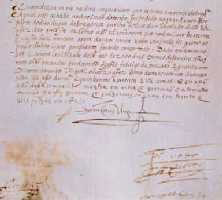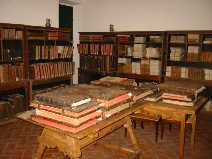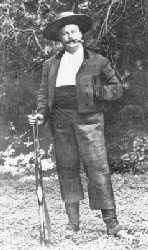Archives
The Historical Archive of the House of Bragança, the Musical Archive and the Photographic Archive are available for consultation at the Ducal Palace.
The files available in digital format can be consulted during opening hours (Monday to Friday from 10AM to 1PM and 3PM to 6PM).
The files not yet available in digital format can be consulted upon prior appointment.
Historical Archive of the House of Bragança
The Historical Archive of the House of Bragança, housed in the former Bishop-Dean Palace at Vila Viçosa – the richest private archive in the country – consists of a set of codices, bundles and separate documents and has an estimated total of approximately 200,000 pieces, chronologically situated between the end of the 16th century and the end of the 19th century, with the exception of a few scrolls from the 15th century. The original registry office dates back to the time of the creation of the duchy of Bragança in 1442, but precious documentation from this time up to the middle of the 17th century disappeared as a result of the great earthquake of 1755.

For the most part, the documentary collection in existence is of an administrative nature, containing precious information regarding the former counties of the House of Bragança and its storehouses, which spread from Minho and Trás-os-Montes to Extremadura and Alentejo, as well as all records from the private chancellery of the ducal house, of which the books of favours granted by Duke Teodósio II (1583-1630) stand out, records that continued until 1834.
Among the most distinguished of its archivists were the engineer Manuel da Maia, Fr. Manuel António de Ataíde, who succeeded him and later, in the middle of the last century, Pedro António da Silva Rebelo, who proceeded to a profound reform and re-structuring of the archive, a re-structuring that was maintained until the present organisation began in 1949 under the auspices of the House of Bragança Foundation.
When it was first created, the Historical Archive was established in Lisbon, successively in the Palace of the Dukes of Bragança, at Praça do Comércio (between Rua Augusta and Rua do Ouro), the Casa do Risco Public Works Planning Office at the Navy Arsenal, Necessities Palace, Rossio Palace, Rua Vítor Cordon, from where it moved in 1945 to the Vila Viçosa Palace. In this town, it also passed through different facilities within the Castle, between 1965 and 1988, the date on which it was moved to the present premises.
The extensive set of documents is distributed across seven rooms, organised by series, from among which the following stand out: Reform of the Registry Office (1756), General Registry (which includes Favours Granted, Registry Books, etc.), Land Tenure, Extinguished Rights, Civil Court Records, Regal Charters, General Administration (from 1834 onwards), King Ferdinand II, Barcelos Delegation, etc., in addition to an important series of separate documents.
Musical Archive
From the sixteenth century, the Chapel of the Ducal Palace was considered a Royal Chapel and, therefore, sacred music became one of the dominant considerations. In the time of King João II, the eighth Duke of Bragança – himself a composer by whom there is an autographed work -, and later of King João IV, the study and execution of this musical genre was of great importance. Musicians like Roberto Tornar or João Lourenço Rebelo wrote and played here.
To supply the choir of the Chapel, there was a school for young singers at this Palace, called the School of the Three Wise Men, which was attended by musicians like João de Sousa Carvalho. This Archive also features an excellent collection of opera librettos from the 18th and 19th centuries.

All of this contributed to turning the Musical Archive into one of the best in Portugal, as evidenced by the catalogue prepared by Fr. Augusto Alegria in 1989.
Photographic Archive
The Royal Family were great photography enthusiasts. This fondness is reflected in the numerous photographs of the most varied situations and events. Dozens of albums include family records that depict holidays in Cascais, hunts at Vila Viçosa, a children’s bullfight in Sintra, a trip across the Mediterranean, etc.; as well as a multitude of official events and ceremonies.
This Archive is comprised of pieces by the most renowned photographers of the era, who attended the various official events and ceremonies. There are more than 40,000 photographs, including after 1910, both the funeral ceremonies of King Manuel II and the visit of Queen Amélie to Portugal. A more recent group of works documents the Foundation’s spaces, collections and activities, i.e., the visits, conferences, concerts and ceremonies held at the Palace, the Castle and the Agostinhos Convent.

The Archive also has three old and unique films: “Nuno Álvares, Hero and Saint”; “The Battle of Flowers in Campo Grande”, from 1907; and “Travel of the Royal Prince to the Colonies”, also from 1907. These works are stored at the Cinemateca Portuguesa Film Archive.

Quick Links
Head Office
Casa de Massarelos, Estrada da Gibalta
2760-064, Caxias
Paço Ducal
Newsletter
Fundação da Casa de Bragança © 2020
Privacy Policy | Cookies Policy



